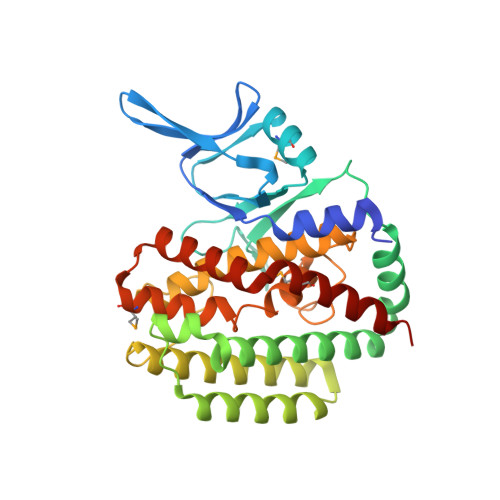Structural Basis for DNase Activity of a Conserved Protein Implicated in CRISPR-Mediated Genome Defense.
Wiedenheft, B., Zhou, K., Jinek, M., Coyle, S.M., Ma, W., Doudna, J.A.(2009) Structure 17: 904-912
- PubMed: 19523907
- DOI: https://doi.org/10.1016/j.str.2009.03.019
- Primary Citation of Related Structures:
3GOD - PubMed Abstract:
Acquired immunity in prokaryotes is achieved by integrating short fragments of foreign nucleic acids into clustered regularly interspaced short palindromic repeats (CRISPRs). This nucleic acid-based immune system is mediated by a variable cassette of up to 45 protein families that represent distinct immune system subtypes. CRISPR-associated gene 1 (cas1) encodes the only universally conserved protein component of CRISPR immune systems, yet its function is unknown. Here we show that the Cas1 protein is a metal-dependent DNA-specific endonuclease that produces double-stranded DNA fragments of approximately 80 base pairs in length. The 2.2 A crystal structure of the Cas1 protein reveals a distinct fold and a conserved divalent metal ion-binding site. Mutation of metal ion-binding residues, chelation of metal ions, or metal-ion substitution inhibits Cas1-catalyzed DNA degradation. These results provide a foundation for understanding how Cas1 contributes to CRISPR function, perhaps as part of the machinery for processing foreign nucleic acids.
Organizational Affiliation:
Howard Hughes Medical Institute, University of California, Berkeley, Berkeley, CA 94720, USA.


















